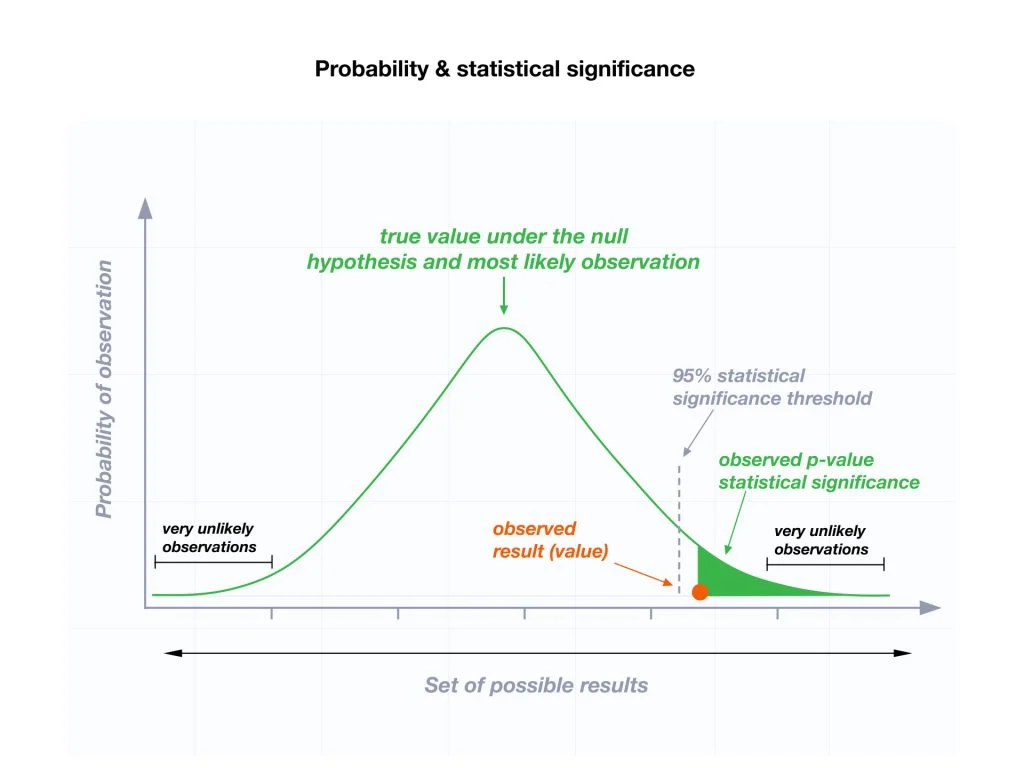P-value is a statistical measure that is used to assess the likelihood of an observed outcome if a null hypothesis is true. It is commonly used in hypothesis testing in order to determine the probability of obtaining particular results, given that the null hypothesis is true.
The P-value is the probability of obtaining an observed or more extreme outcome under the assumption that the null hypothesis is true. It is usually represented by the letter “p”, and the smaller the P-value, the greater the statistical significance of the evidence. A P-value of less than 0.05 is often used as the traditional cut-off for rejecting the null hypothesis and determining statistical significance.
The P-value is calculated using the test statistic and the associated probability distribution. It can be used to determine whether an observed outcome was likely to have occurred by chance or through an underlying phenomenon.
In computer programming, P-values can be used to assess whether results from certain programs or algorithms are valid and reliable. For example, P-values can be used to test the strength of computer algorithm designs, such as search algorithms, to determine if the algorithm is likely to produce the expected results.
In cybersecurity, the P-value can be used to assess the security of different software packages, networks, and applications. For example, P-values can be used to assess the likelihood that an individual user or system is vulnerable to threats, such as malware or hackers.
Overall, the P-value is an important statistical measure for assessing the validity of results, as well as the security of computer programs and applications.






